A medium to large size, hard, beige to ochre, perennial polypore with a maze-like pore surface most of all on dead Oaks.
Home / Mushroom Guide /
Oak Mazegill
Oak Mazegill
| Mushroom Type | |
| Common Names |
Oak Mazegill (EN), Thick-Maze Oak Polypore (US), Tagell Ddryslyd Derw (CY), Gmatwek Dębowy (PL), Labirintustapló (HU) |
| Scientific Name |
Daedalea quercina |
| Synonyms |
Trametes quercina, Lenzites quercina |
| Season Start |
All |
| Season End |
All |
| Average Mushroom height (CM) | |
| Average Cap width (CM) |
4–20 |
Please note that each and every mushroom you come across may vary in appearance to these photos.
Fruiting Body
Perennial (rarely annual), 4–20 across, projecting 3–8 cm from the substrate. Its shape depends on the surface it grows, could be semi-circular, shelf-like and somewhat semi-conical too. Broadly attached to the substrate and always thicker at the attachment.
Sterile (upper) surface is cream, beige to ochre, velvety at first, then becoming uneven with small, hard warts. Concentric rings of growths are often can be seen. Margin is sharp and fairly even, often paler than the rest of the upper surface.
Pores
Tubes up to 1–4 cm long, cream or beige to ochre. Pores really wide, more or less maze-like, sometimes almost lamellate with very thick walls.
Flesh
2–5 cm thick, tough, corky, more or less homogenous (but sometimes it appears to be zonate).
Habitat
Most of all it can be found on standing or fallen dead wood of Oaks, but it is rarely recorded from other hardwoods (e.g., Sweet Chestnut) too. It grows solitarily, but often forms tiers. It is not fully clear whether it is a necrotrophic parasite (as some authors suggests) or saprotrophic (as others states), but it is causing brown-rot (of the heartwood of its host).
Possible Confusion
It is hard to confuse if fully matured, but younger fruit bodies can be confused with other polypores with maze-like pore surface.
Blushing Bracket (Daedaleopsis confragosa) has thinner pore-walls, and prefers Willows and Poplar over Oaks.
Birch Mazegill (Trametes betulina, syn: Lenzites betulinus), pictured, has a hairy, suede-like zoned skin, and thinner, more gill-like (lamellate) than maze-like (labyrinthoid) pore surface. It prefers Birch and Beech, but can be found on oaks and other hardwoods too.
Taste / Smell
Inedible. Smell pleasant, mushroomy, taste not distinctive to slightly bitter, but it has tough texture.
Frequency
Occasional and widespread in the UK.
Spores
Spore print is white. Spores ellipsoid, colourless (hyaline), smooth and inamyloid (meaning: there is no starch in the spore wall).
Other Facts
Oak Mazegill was(!) the type species of the former genus Daedalea. The genus was named after the skillful architect and craftsman, Daedalus [Greek: Δαίδαλος] who built the Labyrinth [Greek: Λαβύρινθος] at Knossos, upon the request of King Minos of Crete, which imprisoned Minotaur [Greek: Μινώταυρος], the monster who had bull head and human body. It is worth reading the whole myth! The epithet, ‘quercina‘ refers to the main host/substrate of this species, which is Oak (Quercus).
The scientific name of Oak Mazegill changed recently to Fomitopsis quercina, but apart from mycologists, nobody uses it just yet, so we decided to leave the scientific name as it was before, until the new name became more well-known.
This change is supported by DNA-evidence, and the relevant publication is:
Spirin V, Runnel K, Vlasák J, Viner I, Barrett MD, Ryvarden L, Bernicchia A, Rivoire B, Ainsworth AM, Grebenc T, Cartabia M, Niemelä T, Larsson KH, Miettinen O: The genus Fomitopsis (Polyporales, Basidiomycota) reconsidered. Studies in Mycology, 2024;107:149–249.


 (2 votes, average: 4.50 out of 5)
(2 votes, average: 4.50 out of 5)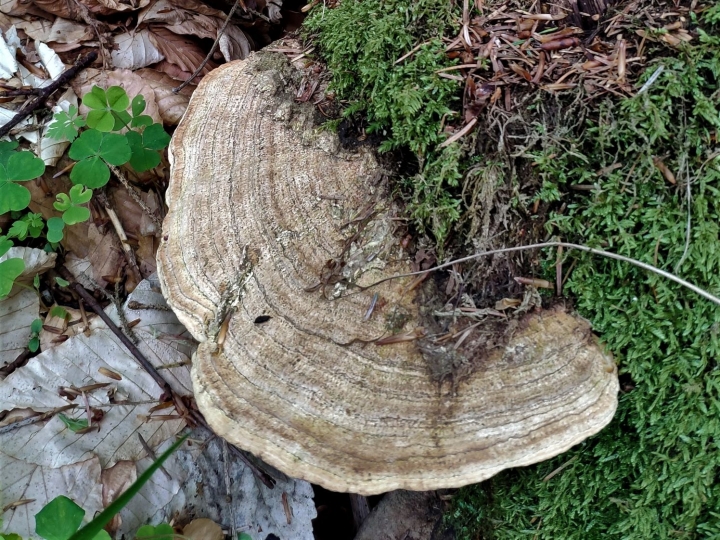















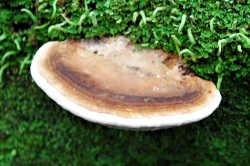
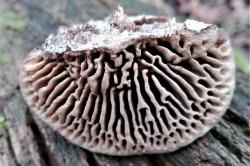
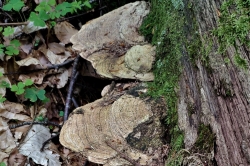
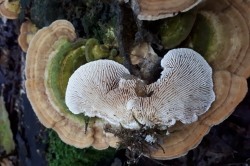






Leave a Reply